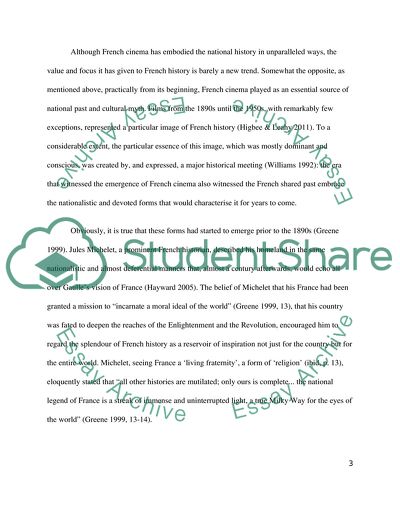Cite this document
(Contemporary French National Cinema: the 400 Blows and Amelie Essay, n.d.)
Contemporary French National Cinema: the 400 Blows and Amelie Essay. Retrieved from https://studentshare.org/visual-arts-film-studies/1752622-cinema-is-a-cultural-artefact-that-articulates-the-nations-myths-the-cinema-speaks-the-national-and-the-national-speaks-the-cinema-susan-hayward-discuss-in-relation-to-two-french-filmsthe-400-blowstruffaut-1959-amelie-2001
Contemporary French National Cinema: the 400 Blows and Amelie Essay. Retrieved from https://studentshare.org/visual-arts-film-studies/1752622-cinema-is-a-cultural-artefact-that-articulates-the-nations-myths-the-cinema-speaks-the-national-and-the-national-speaks-the-cinema-susan-hayward-discuss-in-relation-to-two-french-filmsthe-400-blowstruffaut-1959-amelie-2001
(Contemporary French National Cinema: The 400 Blows and Amelie Essay)
Contemporary French National Cinema: The 400 Blows and Amelie Essay. https://studentshare.org/visual-arts-film-studies/1752622-cinema-is-a-cultural-artefact-that-articulates-the-nations-myths-the-cinema-speaks-the-national-and-the-national-speaks-the-cinema-susan-hayward-discuss-in-relation-to-two-french-filmsthe-400-blowstruffaut-1959-amelie-2001.
Contemporary French National Cinema: The 400 Blows and Amelie Essay. https://studentshare.org/visual-arts-film-studies/1752622-cinema-is-a-cultural-artefact-that-articulates-the-nations-myths-the-cinema-speaks-the-national-and-the-national-speaks-the-cinema-susan-hayward-discuss-in-relation-to-two-french-filmsthe-400-blowstruffaut-1959-amelie-2001.
“Contemporary French National Cinema: The 400 Blows and Amelie Essay”, n.d. https://studentshare.org/visual-arts-film-studies/1752622-cinema-is-a-cultural-artefact-that-articulates-the-nations-myths-the-cinema-speaks-the-national-and-the-national-speaks-the-cinema-susan-hayward-discuss-in-relation-to-two-french-filmsthe-400-blowstruffaut-1959-amelie-2001.


